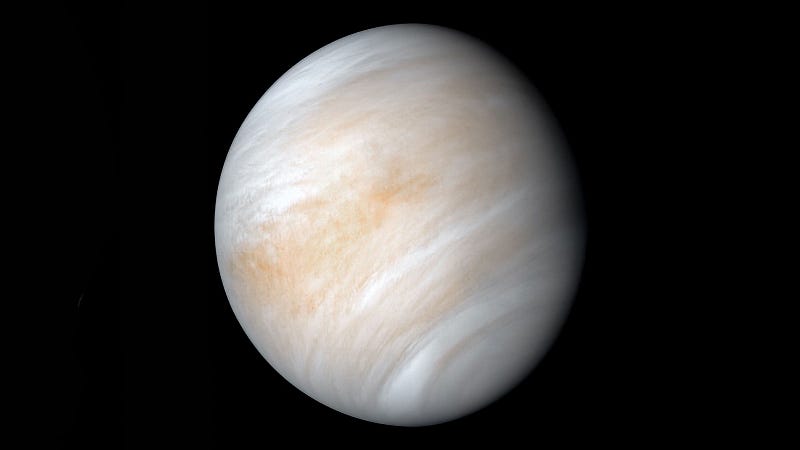Exploring Venus: Upcoming Missions and the Search for Life
Written on
Chapter 1: The Allure of Venus
Venus, often described as a hellish landscape, is soon to regain our attention as we embark on four groundbreaking missions that could potentially transform our search for extraterrestrial life across the cosmos. Presently, Mars is the focal point of global interest. NASA's Perseverance rover is actively discovering organic molecules within ancient sediments, and plans are underway for human landings on the Red Planet by SpaceX in the near future. However, soon our gaze will shift toward Venus, which tantalizingly hints at the possibility of life within its dense clouds. After a three-decade hiatus, we are returning to this mysterious planet with missions aimed at unraveling its secrets and exploring the potential for life beyond Earth.
Before delving into the details of these missions, it’s essential to understand why Venus could harbor life. If life does exist there, it would be vastly different from anything we recognize on our home planet.
Section 1.1: The Hostile Environment of Venus
The conditions on Venus are incredibly harsh. With surface temperatures reaching up to 900°F (475°C), it stands as the hottest planet in our Solar System, compounded by extreme atmospheric pressure, fierce winds reaching 450 mph, and an atmosphere primarily composed of carbon dioxide. Yet, amidst the clouds of sulfuric acid, the conditions may be just right for life. The temperature remains conducive, essential building blocks for life are present, and there is an abundance of chemical energy. This has led scientists to propose that microbe-like organisms could potentially thrive in the Venusian atmosphere.
Subsection 1.1.1: Theoretical Foundations of Life

How could life emerge in such a hostile environment? Some evidence suggests that Venus may have once had a more hospitable climate, complete with liquid water oceans. Indicators of both ancient and ongoing volcanic activity support this theory. It is plausible that billions of years ago, microbial life formed and evolved around Venusian hydrothermal vents and adapted to the planet's changing conditions, ultimately leaving only the microbes residing in the clouds today.
Section 1.2: The Search for Evidence
However, these ideas remain largely theoretical, built upon limited evidence. It has been over thirty years since a probe last touched the surface of Venus, and recent findings from orbiters have provided only ambiguous data. For instance, while phosphine was detected in the atmosphere—potentially a sign of life—this could also be attributed to sulfur dioxide.
Chapter 2: Upcoming Missions to Venus
As we venture into this intriguing puzzle, NASA, ESA, and MIT scientists are set to launch four missions to search for signs of life on Venus.
The first two NASA missions, VERITAS and DAVINCI+, are scheduled for the late 2020s.
Section 2.1: The VERITAS Mission
VERITAS aims to explore the planet’s surface. This orbiter will employ radar and gravitational measurements to analyze the topography and surface composition. The objective is to gather evidence of past oceans and volcanic activity, providing insight into whether Venus could have been a habitable world.
Section 2.2: The DAVINCI+ Mission
In contrast, DAVINCI+ will focus on the atmosphere. Utilizing a parachute lander alongside an orbiting imager, it will investigate the atmospheric composition to discern its evolution and the unique chemical processes at play. This mission will complement VERITAS by painting a comprehensive picture of Venus's history.
Subsection 2.2.1: The EnVision Mission
Following these, the European Space Agency's EnVision mission is set for 2031. This mission will also examine the atmosphere and geological features but will employ a distinct suite of sensors to create a timeline of Venus's ancient history. While VERITAS may identify evidence of riverbeds, EnVision will help determine their age.
Subsection 2.2.2: The Venus Life Finder (VLF)
Lastly, MIT's VLF mission is anticipated to launch aboard Rocket Lab's Photon system as early as 2023. This ambitious mission will feature a variety of sensors, landers, and a sample return initiative, directly aimed at finding living organisms in the Venusian atmosphere. This high-stakes endeavor includes a balloon probe designed to remain in the habitable zone, collecting potential life signs—a pioneering attempt that could yield invaluable data.
Section 2.3: The Impact of Private Funding
The VLF mission is particularly exciting as it is privately funded. The rise of affordable launch systems like SpaceX's Falcon 9 and Rocket Lab's Photon has opened doors for universities and other organizations to finance bold space ventures. Should VLF succeed, we might witness a surge of privately funded missions targeting Jupiter and Saturn's icy moons in search of life.
Section 2.4: Implications of Potential Discoveries
What might these groundbreaking missions uncover? VLF represents a critical juncture; it may either find life or not. Discovering life in Venus's clouds would have profound implications, suggesting that life can thrive in environments vastly different from Earth, potentially indicating a higher prevalence of life throughout the universe. Moreover, VLF's findings could reveal unique biosignatures in the Venusian atmosphere, which the James Webb Space Telescope could then search for in exoplanets across our galaxy. This could pave the way for discovering life beyond our solar system.
As we anticipate the findings from these missions, we are on the brink of uncovering significant scientific revelations regarding the origins and evolution of life in such an extraordinary environment. Over the next decade, we can expect remarkable discoveries from Venus, finally shifting our focus away from Mars. We are entering an era of extraordinary scientific inquiry, poised to explore life in our cosmic neighborhood, which may lead us to uncover similar life forms on distant exoplanets. The universe may soon seem far more populated, or we may come to realize just how isolated we truly are.